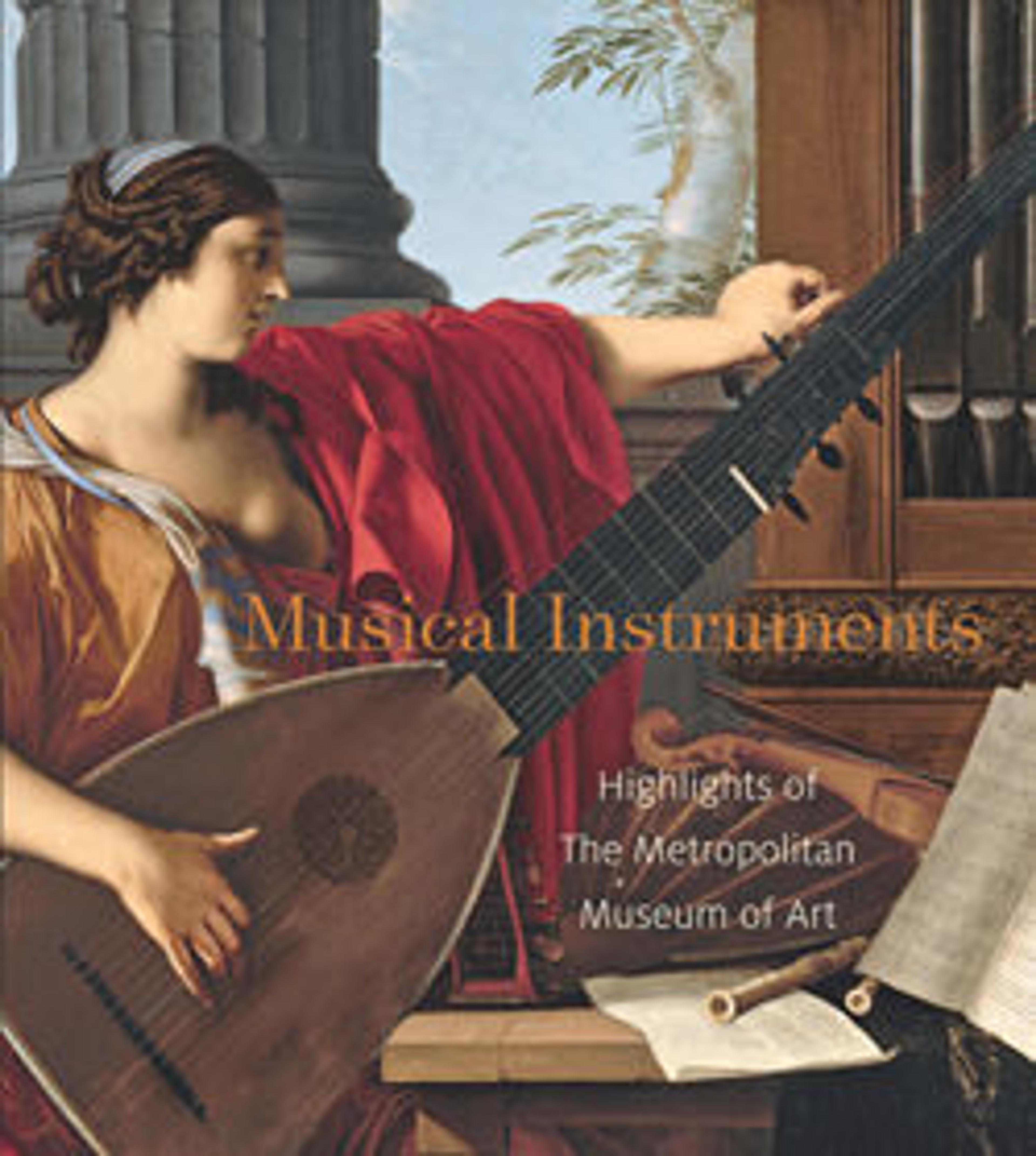Sarangi
A beautiful full sound and a close proximity to the melodic flexibility of the human voice make the sarangi the most important bowed instrument of classical Hindustani music of northern India and Pakistan. A rigid horsehair bow (not shown) rhythmically sounds the gut melody strings that cross over an ivory elephant-shaped bridge (bara ghurac). Melody and virtuosic embellishment are produced by pulling the strings to the side with the fingernails. This playing technique combines with the instrument's short neck to make the sarangi a particularly difficult instrument to master. The number of metal sympathetic strings (tarabs) that pass through the bridge varies. Today thirty to forty of these strings attach to pegs (khunti), either at the side or by entering diagonally placed holes along the neck (chati). Decorative openings at the top, where melody strings enter the peg box (mattha), reflect Mughal architectural influences.
Artwork Details
- Title:Sarangi
- Date:ca. 1900
- Geography:India
- Culture:Indian
- Medium:Wood, ivory, parchment, metal
- Dimensions:29 7/16 × 9 1/2 × 6 7/8 in. (74.7 × 24.2 × 17.5 cm)
- Classification:Chordophone-Lute-bowed-unfretted
- Credit Line:Gift of Mrs. Harold H. Krechmer, in memory of her husband, Harold H. Krechmer, 1982
- Object Number:1982.143.2
- Curatorial Department: Musical Instruments
Audio
9384. Sarangi
0:00
0:00
We're sorry, the transcript for this audio track is not available at this time. Please email info@metmuseum.org to request a transcript for this track.
More Artwork
Research Resources
The Met provides unparalleled resources for research and welcomes an international community of students and scholars. The Met's Open Access API is where creators and researchers can connect to the The Met collection. Open Access data and public domain images are available for unrestricted commercial and noncommercial use without permission or fee.
To request images under copyright and other restrictions, please use this Image Request form.
Feedback
We continue to research and examine historical and cultural context for objects in The Met collection. If you have comments or questions about this object record, please contact us using the form below. The Museum looks forward to receiving your comments.
